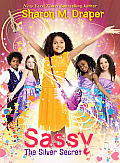

I had the opportunity to hear and to meet
Adora Svitak at BLC10 last week. (She is pictured here with Meredith Melragon.) Adora is a 12 year-old girl, committed to making sure kids have the voice they deserve. I think as teachers, Adora is someone we need to know. Her work and message are important. Adora spoke in Ohio this winter but I was unable to hear her talk. I did get to watch her TED Talk.
WHAT ADULTS CAN LEARN FROM KIDS and I so loved that I got to hear her in person. Adora gave the closing
keynote on the first day of BLC10 and her message was powerful. She is working to help everyone, especially educators, see the need for students as real leaders. She began her talk by asking us what we think of when we think of leaders. She then went on to show us the definition of leadership and reminded us that nowhere in the definition does it say that leaders need to be adults. Instead, leadership is the ability to guide, direct and influence people. She continued with her beliefs about why kids can and do make wonderful leaders. She told us about
FREE THE CHILDREN,
KIDS VS GLOBAL WARMING ALEX'S LEMONADE STAND, and the
DAYFINDER app created by a 15 year old.
Adora also told us about an exciting TEDx conference that will be held on September 18--
TEDx REDMOND: Power to the Students .
Adora is hosting this conference and it sounds amazing. Take some time to learn about the
speakers at TEDx Redmond. I plan to spend some time today learning about these amazing people. This talk resonated for me because if you saw my
slides from my Literacies for All Session, you know that one of the things I am most excited about these days is the voice that children have and the difference they make in the world. I believe this time in the world is amazing because kids have the tools to be given the global voice they deserve. They are finding passions and doing things that matter. It is something I believe strongly in and something I am committed to. I don't think it is enough to have kids collect pennies or winter coats for a cause teachers determine matters. I agree completely with Adora when she asks us to question the quote, "Children are the leaders of tomorrow." She asks, "Why shouldn't children be leaders today?"
Adora is also a writer. She has published several books and articles. She wants kids to love reading and writing and has created pieces to help do that. I picked up DANCING FINGERS: SELECTED POEMS AND WRITING INSPIRATIONS FROM TWO SISTERS, a book that she wrote with her sister, Adrianna. The introduction to the book begins with these words, "Adora and Adrianna Svitak believe that age should not be a limiting factor when it comes to expressing creativity and imagination through writing and music." This is a book of poetry--but it is more than an anthology. The book is filled with poems written by Adora and Adrianna, but it is also an inspirational book for writers. The book is divided into sections such as Animal Poems, Poems about the wild, Poems inspired by olden times and more. Each section has inviting readers to try different things in their writing. Then the sisters share poems of their own. An amazing book packed with great writing and great inspiration. I am looking excited about adding this book to our school library. Adora also has a book called
FLYING FINGERS: MASTER THE TOOLS OF LEARNING THROUGH THE JOY OF WRITING when she was seven.
I feel honored to have heard Adora speak, to have met her in person, and to know more about her work.















